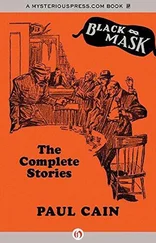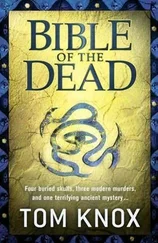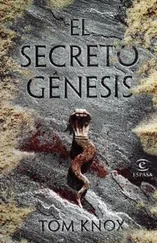Tom Knox - The Marks of Cain
Здесь есть возможность читать онлайн «Tom Knox - The Marks of Cain» — ознакомительный отрывок электронной книги совершенно бесплатно, а после прочтения отрывка купить полную версию. В некоторых случаях можно слушать аудио, скачать через торрент в формате fb2 и присутствует краткое содержание. Жанр: Триллер, на английском языке. Описание произведения, (предисловие) а так же отзывы посетителей доступны на портале библиотеки ЛибКат.
- Название:The Marks of Cain
- Автор:
- Жанр:
- Год:неизвестен
- ISBN:нет данных
- Рейтинг книги:4 / 5. Голосов: 1
-
Избранное:Добавить в избранное
- Отзывы:
-
Ваша оценка:
- 80
- 1
- 2
- 3
- 4
- 5
The Marks of Cain: краткое содержание, описание и аннотация
Предлагаем к чтению аннотацию, описание, краткое содержание или предисловие (зависит от того, что написал сам автор книги «The Marks of Cain»). Если вы не нашли необходимую информацию о книге — напишите в комментариях, мы постараемся отыскать её.
The Marks of Cain — читать онлайн ознакомительный отрывок
Ниже представлен текст книги, разбитый по страницам. Система сохранения места последней прочитанной страницы, позволяет с удобством читать онлайн бесплатно книгу «The Marks of Cain», без необходимости каждый раз заново искать на чём Вы остановились. Поставьте закладку, и сможете в любой момент перейти на страницу, на которой закончили чтение.
Интервал:
Закладка:
Their hire car was speeding past a tiny Skoda, an old car from the communist era. A farmer sat in the front with his fat wife at his side. The Skoda was doing thirty kph.
Simon continued:
'The case of the mysterious Cagots is similar — yet more severe. The Cagots are, or were, a crossbreed. They lived in the same region as the Basques. Indeed they probably descend from Basques who intermarried with dark Saracen soldiers in the eighth and ninth centuries. As such, they were, from the beginning, very isolated within Christendom — but with an additional and fatal taint of the infidel.
'So they were persecuted. And by the seventeenth century these repressions were reaching homicidal levels: Cagots were being nailed to church doors. One byproduct of this persecution and isolation was the intensification of genetic problems within the Cagot community — '
David interrupted: 'It wasn't their fault.'
Simon replied, with a puzzled frown, 'No, of course, it wasn't their fault. However, the reputation they had for psychotic tendencies, cretinism, even cannibalism, was, tragically, not entirely unjustified. Many Cagots were afflicted with various syndromes which led to bizarre and even repellent behaviour.'
Amy asked: 'That was why the King of Navarre instituted the tests — to see if the Cagots were truly "different"?'
'Yes. Moreover, primitive though science was at the time, it seems the King's doctors did observe the syndactyly, the web-footed deformity, and other physical manifestations of the Cagots' inbred genotype. They concluded that the Cagots were indeed different to the rest of humanity, in a very significant way.'
He flipped a page of the notebook.
'The discovery alarmed the Pope and his cardinals in Rome. The idea that God would actually be creating Serpent Seed, new kinds of men, different kinds of men, men who are not men, was pure anathema. It threatened the very basis of accepted Catholic doctrine that mankind is made in God's image. How can God have two images? Two kinds of children? Revelation of this truth would not only justify the worst persecution, of a Christian and European people — it would bring into question all of Catholic theology.'
'All Christian theology,' said Angus, 'for that matter.'
'This is why the church sought to end the persecution of the Cagots. For the very same reason the Spanish Inquisition decided to cease and suppress the Basque witch burnings. The Catholic elite wanted the "choir of Christendom" to remain "indivisible". The Basques and Cagots would be returned to the fold of humanity.'
'Yet there were, still, elements in the church that adhered to the bigoted, Curse of Cain philosophies. Especially amongst the lower clergy, the local peasantry, and some of the more rigorous church orders, like the Dominicans.
'Ever eager to avoid schism, the Vatican agreed to a compromise. The relevant and most controversial documents — relating to the witch burnings, and the blood test on the Cagots, and the ensuing papal conciliations — were not destroyed: they were secretly housed in the ancient archives of the Dominican University in Rome, the Angelicum. Centuries later they were carefully rehoused in a brand new monastery in central France.'
'Purpose-built,' Angus interrupted, 'by a far right architect, as a safe place to hide these documents. Correct?'
'And a masterpiece of functionality,' Simon replied. 'So offputting it sends people mad.'
Amy was still gazing out of the window. Her cardigan had fallen from her shoulder, exposing her bare suntanned skin. Gold and soft, and yielding.
David fixed his eyes on the road. Simon lifted his notes.
'Back in 1907 a brilliant young German anthropologist, Eugen Fischer, arrived in the desolate, diamond-rich German colony of Sud West Afrika, now Namibia. He was following in the footsteps of his hero, the great British scientist — and founder of modern eugenics — Francis Galton.
'What Fischer found amazed him. By studying the khoisan — the "Bushmen" of the Kalahari, and their close cousins, the Basters, a crossbreed between Bushmen and Dutch settlers, Fischer discovered that in the very recent past mankind had…possibly speciated.'
Amy said nothing. David said nothing. Angus was wearing a distant smile. Simon continued:
'The process of speciation — the dividing of one species into new species — is of course crucial to evolution. Yet the process is itself ill defined. When does a new breed or strain of an organism become a subspecies, and when can it be termed a truly separate species? Geneticists, zoologists and taxonomists still argue this point; but no one denies that speciation occurs.'
Simon turned a page.
'But hitherto nobody had expected that speciation might have happened to Homo sapiens within the last few thousand years. As Angus says, some experts believe a small form of human might have evolved fairly recently in Asia — Homo floresiensis. Hominids like this might even explain those Biblical myths of non-Adamite humans, implied in the first verses of Genesis. A genuine folk memory of small, dwarvish, almost-men.
'But that is still ten thousand years back. And yet, as Fischer investigated the Khoisan and the Basters he became convinced that something akin to speciation was right now taking place in Africa: either the Bushmen were a new species, or they were close to becoming so.
'This discovery affirmed the racism already present in Fischer's thinking. Like many scientists of his time, Fischer believed without embarrassment in a hierarchy of human races, with whites at the top, and aborigines and black Africans at the bottom. He now put the Bushman even lower than that, beyond the family of man.'
David changed gear to overtake a big red lorry with Intereuropa written on the side. He asked: 'Yet this guy Eugen Fischer liked Jews? The Kellermans?'
'Yes,' Simon answered. 'Fischer was, ironically, no anti-Semite. He appreciated the friendship of other clever men, especially if they were wealthy and glamorous. He became friends with the Kellerman dynasty, German-Jewish diamond merchants making millions from the mineral-rich sands of the Namibian desert. This friendship was to prove crucial in the following decades.'
Another page was turned.
'Then, in 1933, Adolf Hitler came to power. He had avidly devoured Fischer's books during his imprisonment as a young man. Now, as Der Fuhrer, Hitler had the means to employ Fischer properly. First, Hitler made Fischer a rector of Berlin University. Then, in 1940, he despatched Fischer to a new German concentration camp at Gurs, near the genetically fascinating Basque corner of France.
'Adolf Hitler had a job in mind for the great scientist. To validate Nazi race science. And so, in Gurs, Fischer was told to gather the most interesting human genetic specimens in one place, for intense medical testing: gypsies and Jews, French and Basques, Spanish and Cagots.
'By comparing the data derived from these subjects, with the data already derived from Fischer's Namibia research, the Fuhrer hoped that his prize scientist would provide a definitive, authoritative and genetically provable racial hierarchy: final evidence that Germans were at the top, and Jews were at the bottom.
'Fischer was gratifyingly successful in these endeavours. In the first year, ably assisted by some brilliant German doctors, he discovered DNA. The basis of all modern genetics.'
Simon closed his notebook.
Amy said: 'But what did Fischer discover then? In his second year at Gurs? The frightening and terrible discovery? What was that?'
Angus was no longer smiling, he was frowning.
'Well…that's the motherlode, the ultimate question. And that is what we are about to find out.' He scanned the rainy road ahead. 'If we don't die first.'
46
Интервал:
Закладка:
Похожие книги на «The Marks of Cain»
Представляем Вашему вниманию похожие книги на «The Marks of Cain» списком для выбора. Мы отобрали схожую по названию и смыслу литературу в надежде предоставить читателям больше вариантов отыскать новые, интересные, ещё непрочитанные произведения.
Обсуждение, отзывы о книге «The Marks of Cain» и просто собственные мнения читателей. Оставьте ваши комментарии, напишите, что Вы думаете о произведении, его смысле или главных героях. Укажите что конкретно понравилось, а что нет, и почему Вы так считаете.












